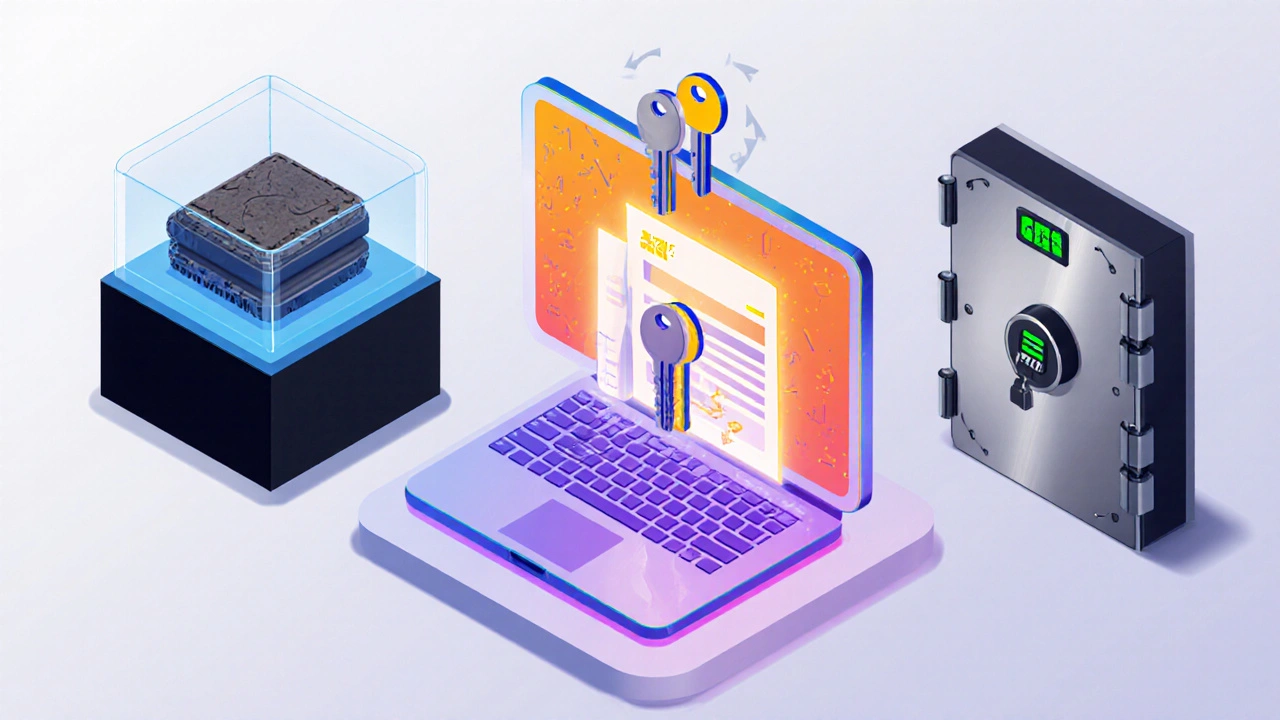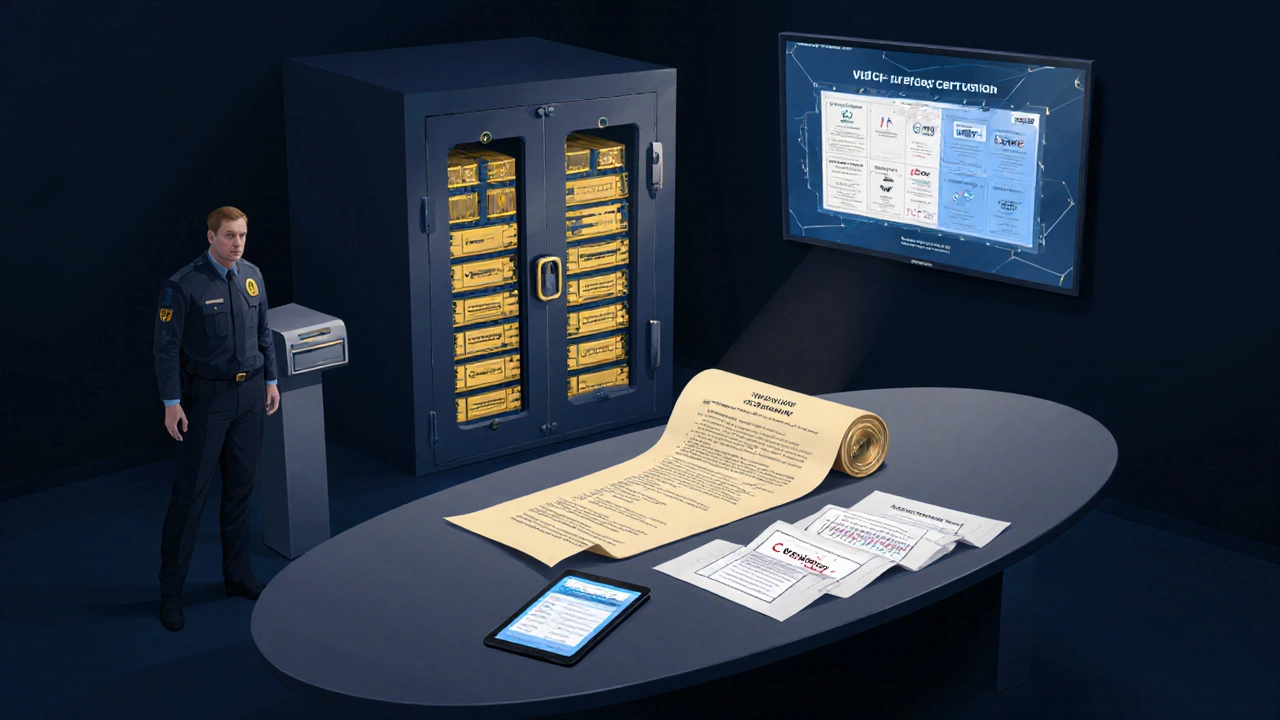Choosing the Right Crypto Custody Solutions: A Practical Guide
Finding a safe place for your digital assets feels like choosing a lock for a safe you can’t see. The market is flooded with options, from simple mobile apps to heavyweight institutional platforms. This guide walks you through the key decisions you need to make so you can pick a custody solution that matches your risk tolerance, compliance needs, and budget.
Quick Takeaways
- Identify your asset volume and usage pattern - large, infrequent trades need cold storage; daily trading needs hot access.
- Prioritize multi‑signature and hardware‑based key management for higher security.
- Check regulatory compliance and insurance coverage before signing any contract.
- Compare total cost of ownership, not just headline fees.
- Create a decision checklist to avoid overlooking hidden risks.
Understanding Custody Types
At its core, crypto custody solutions are services that store, protect, and manage the private keys that give you control over cryptocurrencies. They differ mainly in where the keys reside and who controls them.
Cold Wallet is a hardware or paper device that never connects to the internet, offering the highest resistance to hacking. Ideal for institutional investors or individuals holding large sums for the long term.
Hot Wallet lives on an online server or mobile app, providing instant access for trades and payments. It’s convenient but exposed to cyber‑attacks, so it should hold only a small, liquid portion of your portfolio.
Multi‑Signature Wallet requires multiple private keys to approve a transaction. This adds a layer of governance-perfect for corporate treasuries where several signers must approve withdrawals.
Institutional Custody Provider offers a managed service that combines hardware security modules, insurance, and regulatory reporting. Think of it as a bank for digital assets.
Self‑Custody puts you in full control of your keys, usually via a hardware device you own. It eliminates third‑party risk but makes you responsible for backups and security.
Security Factors to Evaluate
Security isn’t a single checkbox; it’s a collection of interlocking controls.
- Key Management System (KMS): Look for custodians that use hardware security modules (HSMs) and split‑key architectures. A robust KMS prevents any single point of failure.
- Multi‑Signature Support: The more signatures required, the harder it is for a rogue actor to steal assets.
- Physical Security: Custodians should store hardware devices in certified vaults with biometric access and 24/7 surveillance.
- Security Audits: Independent third‑party audits (SOC2, ISO27001) provide evidence that processes are regularly reviewed.
- Penetration Testing: Ongoing red‑team exercises demonstrate a proactive stance against emerging threats.
When a provider mentions “bank‑grade security,” ask for the specific standards they meet. You’ll often find references to Regulatory Compliance frameworks such as the New York State Department of Financial Services (NYDFS) BitLicense or the EU’s MiCA guidelines.

Compliance, Insurance, and Legal Safeguards
Regulation can make or break a custody partnership. Verify that the custodian is registered with the relevant financial authority in the jurisdictions where you operate. For Australian users, a custodian should align with ASIC’s crypto‑asset guidance.
Insurance Coverage protects against loss due to theft, hacking, or internal fraud. Look for policies that cover at least 100% of your assets and understand any exclusions (e.g., loss due to user error).
Legal agreements should clearly state the allocation of custody risk, the process for claim filing, and the jurisdiction for dispute resolution. A well‑drafted Service Level Agreement (SLA) can save you months of litigation.
Cost & Operational Considerations
Price structures vary widely: some custodians charge a flat fee per transaction, others a percentage of assets under custody (AUC). Hidden costs can include onboarding fees, audit fees, and withdrawal penalties.
Calculate the total cost of ownership (TCO) by adding:
- Setup and integration costs (API connections, KYC onboarding).
- Ongoing custody fees (percentage‑based or per‑transaction).
- Insurance premiums.
- Compliance reporting fees.
For small traders, a low‑fee hot wallet might be cheaper, while institutions usually accept higher fees for stronger guarantees.
Decision Checklist
- Define asset volume and frequency of movement.
- Choose desired custody type (cold, hot, multi‑sig, institutional).
- Verify KMS architecture and multi‑sig support.
- Confirm regulatory registration in all operating jurisdictions.
- Ask for insurance policy details and coverage limits.
- Review third‑party audit reports (SOC2, ISO27001, etc.).
- Calculate TCO and compare against budget.
- Run a trial deposit and withdrawal to test operational smoothness.
Cross‑checking each item ensures you don’t overlook a critical risk factor.

Comparison of Common Custody Options
| Custody Type | Security Level | Accessibility | Typical Cost | Insurance | Best For |
|---|---|---|---|---|---|
| Cold Wallet (Hardware) | Very High - offline storage, tamper‑evident | Low - requires manual signing | $100‑$200 device + minimal fees | Self‑insured or third‑party policy (optional) | Long‑term HODLing, high‑net‑worth individuals |
| Hot Wallet (Hosted) | Medium - depends on provider’s security | High - instant online access | 0.1‑0.5% per transaction or flat monthly fee | Rarely offered; user must arrange own coverage | Active traders, DeFi participants |
| Multi‑Signature Custody | High - multiple approvals needed | Medium - extra signing steps | 0.2‑0.7% of AUC | Often included in institutional packages | Corporate treasuries, DAO funds |
| Institutional Custody Provider | Very High - HSMs, air‑gapped vaults | Medium‑High - API access with limits | 0.5‑1% of AUC + setup fees | Comprehensive coverage up to $100M+ | Funds, exchanges, large enterprises |
| Self‑Custody (Hardware device) | High - depends on user practices | Low‑Medium - manual transfers | Device cost only, no ongoing fees | User‑arranged, optional | Tech‑savvy investors, privacy‑focused users |
Next Steps and Troubleshooting
After you’ve selected a provider, follow these practical steps:
- Onboard securely: Complete KYC, set up MFA, and store recovery phrases offline.
- Test the workflow: Transfer a small amount, confirm receipt, then try a withdrawal.
- Monitor reports: Review monthly security and compliance reports from the custodian.
- Plan for emergencies: Establish a “cold‑storage fallback” in case the provider experiences downtime.
If a withdrawal is delayed, verify that multi‑sig thresholds were met and that any compliance holds (e.g., AML flags) have been cleared. Most issues resolve within 24‑48hours when you have clear communication channels.
Frequently Asked Questions
What is the difference between hot and cold custody?
Hot custody stores private keys on internet‑connected servers, offering instant access but exposing the keys to hacking. Cold custody keeps keys offline-usually on hardware devices or paper-making them far harder to steal, though accessing the assets requires manual steps.
Do I need insurance if I use an institutional custodian?
Most reputable institutional custodians bundle insurance that covers theft, hacking, and internal fraud up to a specified limit. Always read the policy wording; some exclusions may apply to loss caused by user error or regulatory seizures.
Can I combine multiple custody methods?
Yes. A common strategy is to keep the bulk of assets in a cold wallet, a modest amount in a hot wallet for trading, and use a multi‑signature institutional custodian for corporate funds. This layered approach balances security with liquidity.
How often should I audit my custody arrangement?
At a minimum, conduct a quarterly review of audit reports, insurance certificates, and compliance status. For high‑value portfolios, a semi‑annual independent penetration test is advisable.
What regulatory bodies should I check for compliance?
In Australia, look for registration with ASIC. In the U.S., verify NYDFS BitLicense or FinCEN registration. EU users should ensure the custodian complies with MiCA. Always match the custodian’s licences with the jurisdictions you operate in.





